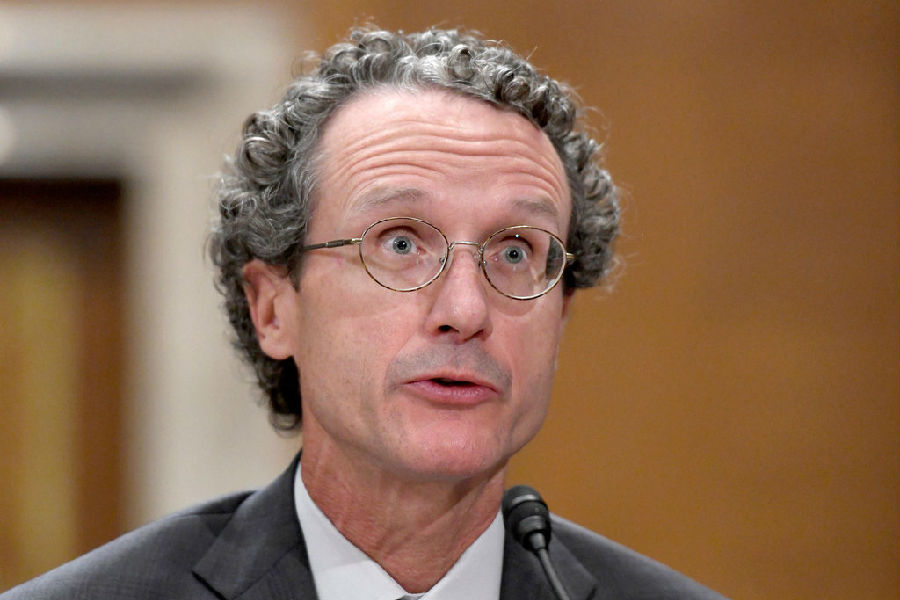“Particulate matter is extremely harmful and it leads to a large number of premature deaths,”
“微粒物质危害极大,会导致大量人口早逝,”
said Richard L. Revesz, an expert in environmental law at New York University.
纽约大学环境法专家查理·里弗斯说道。
He called the expected change a “monumental departure”
他称这一预料之中的变化
from the approach both Republican and Democratic E.P.A. leaders have used over the past several decades
“严重背离”了环保署过去数十年来横跨两党的各届领导人一直沿用的方法,
and predicted that it would lay the groundwork for weakening more environmental regulations.
他还预测,这一改变将奠定下日后撼动其他环保规定的基础。
“It could be an enormously significant impact,” Mr. Revesz said.
“可能因此造成巨大的影响,”里弗斯说。
The Obama administration had sought to reduce planet-warming greenhouse gas emissions under the Clean Power Plan
奥巴马政府曾试图通过清洁能源计划推动公用事业公司脱离煤炭,
by pushing utilities to switch away from coal and instead use natural gas or renewable energy to generate electricity.
转用天然气或可再生能源发电,籍此减少温室气体的排放。
The Obama plan would also have what is known as a co-benefit: levels of fine particulate matter would fall.
这一方案还能带来一大衍生利益:降低细颗粒物的水平。
The Trump administration has moved to repeal the Obama-era plan and replace it with the Affordable Clean Energy rule,
特朗普政府废除了奥巴马执政时期的这一方案,代之以“平价清洁能源”规定,
which would slightly improve the efficiency of coal plants.
在该规定下,燃煤电厂的效率会稍有提高。
It would also allow older coal plants to remain in operation longer and result in an increase of particulate matter.
但该规定允许老旧的燃煤电厂继续运营,势必增加空气中颗粒物的含量。

Particulate matter comes in various sizes.
颗粒物有各种大小。
The greatest health risk comes from what is known as PM 2.5, the range of fine particles that are less than 2.5 microns in diameter.
其中,对健康威胁最大的是pm2.5,即直径小于2.5μm的细颗粒物。
That is about one-thirtieth the width of a human hair.
这一直径大致相当于人类头发宽度的三十分之一。
The E.P.A. has set the safety threshold for PM 2.5 at a yearly average of 12 micrograms per cubic meter.
环保署给pm2.5设置的浓度限值为年平均浓度12μg/m3。
While individual days vary, with some higher,
虽然个别天数有所不同,有时更高,
an annual average at or below that level, known as the particulate matter standard, is considered safe.
但年平均水平处于或低于该水平(即颗粒物标准)时,空气质量即为优。
However, the agency still weighs health hazards that occur in the safe range when it analyzes new regulations.
然而,该机构在分析新法规时,还是会考察处于安全范围内的颗粒水平的健康危害。
Industry has long questioned that system.
长期以来,业界对这一制度一直存有疑虑。
After all, fossil fuel advocates ask,
毕竟,倡导使用化石燃料的人群会问,
why should the E.P.A. search for health dangers, and, ultimately, impose costs on industry,
官方已经认定空气质量安全,
in situations where air is officially considered safe?
环保署为何还要继续查找健康危险,给行业增加成本?
Mr. Wehrum, who worked as a lawyer and lobbyist
韦鲁姆曾为化工企业和化石燃料企业担任律师和说客,
for chemical manufacturers and fossil fuel businesses before moving to the E.P.A.,
后来加入了环保署,
echoed that position in two interviews.
他在两次采访中都曾表达这一观点。
He noted that, in some regulations, the benefits of reduced particulate matter have been estimated to total in the range of $40 billion.
他指出,某些法规预计,减少颗粒物能带来总价值400亿美元左右的好处。
“How in the world can you get $30 or $40 billion of benefit to public health
“当那三四百亿的好处大部分都应归功于某些指数的降低,
when most of that is attributable to reductions in areas that already meet a health-based standard,” he said.
而那些指数本就已达到以人类健康为尺度设置的空气质量标准的要求的情况下,你怎么能说那是新法规在公共卫生领域取得的成效呢?”
“That doesn’t make any sense.”
“根本说不通嘛。”
译文由可可原创,仅供学习交流使用,未经许可请勿转载。



